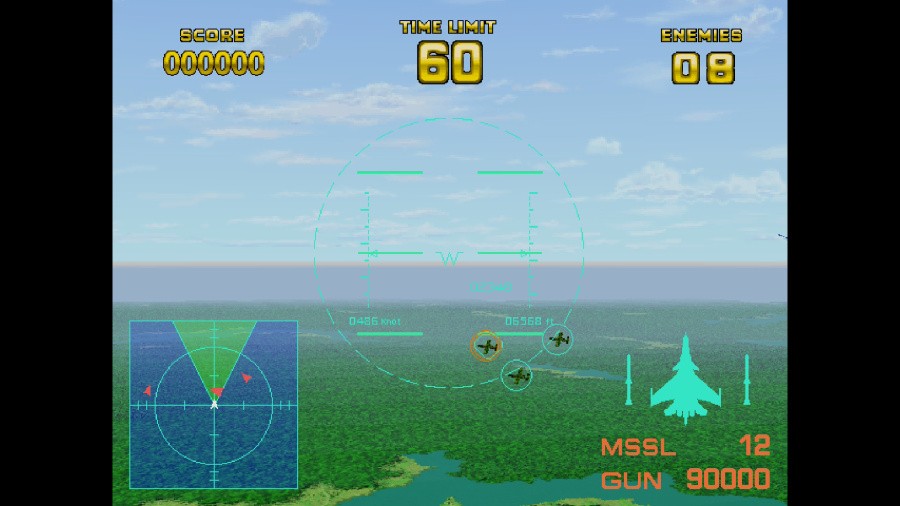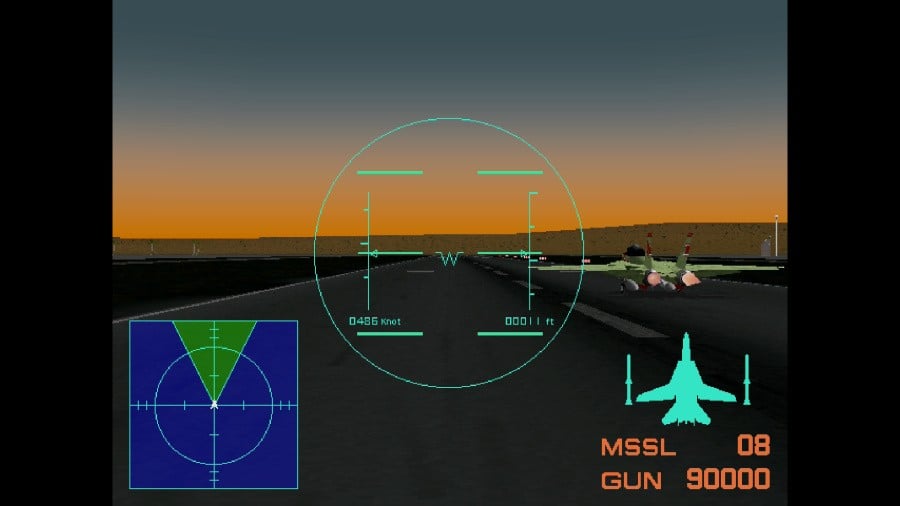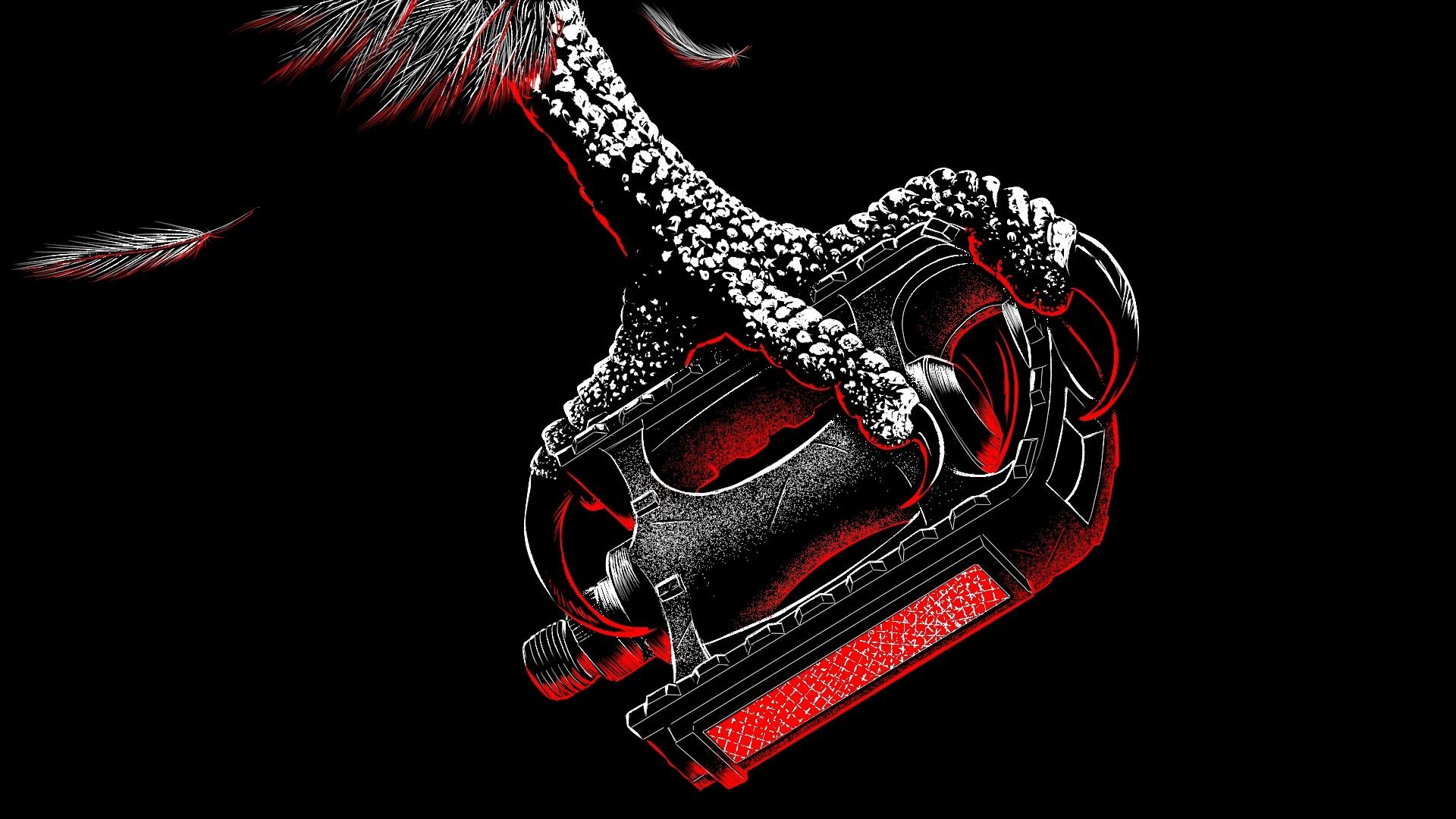Namco’s Ace Combat series is one of the company’s most enduring hits, and has been a solid part of its lineup for decades, selling over 20 million units in the process – yet the origins of the franchise are somewhat murky and certainly not as well known as, say, the Ridge Racer lineage.
This is somewhat ironic, as Ace Combat began life in the same fiery, amusement arcade cauldron as its car-based cousin – in fact, the very first instalment arrived in the same year that Ridge Racer was born: 1993. However, Air Combat was powered by Namco’s System 21 polygonal arcade board, which wasn’t capable of texture mapping; it would fall to its sequel, Air Combat 22, to deliver an experience that offered more graphical impact. That’s the game which is now part of Hamter’s Arcade Archives series on Switch and Switch 2.
As the name suggests, Air Combat 22 used Namco’s more powerful System 22 hardware, the same board which made the jaw-dropping visuals of Ridge Racer possible. The end result is a fascinating (if shallow) Top Gun simulator which laid the foundations of the Ace Combat franchise.

Air Combat 22 puts you in the cockpit of one of three planes — the Grumman F-14 Tomcat, Sukhoi Su-27 and the Lockheed Martin F-22 Raptor (all of them perform exactly the same) — and presents you with three game modes: Cadet, Topgun and Dogfight.
The Cadet mode is playable with or without a tutorial (the latter offers two branching pathways), and guides you through the basics of aerial combat, while Topgun is a far sterner challenge, giving three potential routes to the end and a far wider selection of objectives. Dogfight, meanwhile, places you in several one-on-one duels with the aim of surviving for as long as possible.
Your weapons are a Vulcan machine gun (with infinite ammo) and lock-on missiles (with finite ammo). Using the latter requires you to have a solid lock on your target (the missile literally won’t fire until you do), but even then, you might not score a hit, as some enemy planes are capable of releasing countermeasures.

Taking down enemies with the Vulcan bags you more points, but you need to get in closer to use it effectively. It’s possible to accelerate and decelerate using the ‘ZL’ and ‘ZR’ buttons respectively, so you have quite a significant degree of control over your aircraft, despite this not being a ‘serious’ flight sim – something that would transition neatly into the console versions of Ace Combat which were spawned from this game and its 1993 forerunner.
Visually and sonically, Air Combat 22 certainly feels like a game from 1995, and arguably lacks the same impact as Ridge Racer does, even on modern eyes. Still, it runs at a smooth 60fps and controls really well, and it’s certainly possible to spot the DNA of the franchise when compared to later entries. As such, fans of Ace Combat will find a lot to like here, even if it’s rather basic in comparison.
Like Ridge Racer, Air Combat 22 is limited by the fact that it’s very much designed as an arcade experience rather than a home console one, and expert players will see pretty much all there is to see in the space of a day or two. Unlike Ridge Racer, however, there’s less reason to return as you don’t have the appeal of shaving seconds of lap times, although there is an undeniable attraction to increasing your score and bettering your performance in the Dogfight mode.
Conclusion
Air Combat 22 is arguably more interesting as a historical artefact than it is as a video game, but that’s not to say fans of Namco’s series won’t extract plenty of enjoyment from it. Like stablemate Ridge Racer, it’s a very limited experience designed around short-burst ‘arcade’ play, but it’s still entertaining enough to be worth your time and money; hopefully, it sells well enough for Bandai Namco and Hamster to bring other classic 1990s arcade titles to modern systems.


